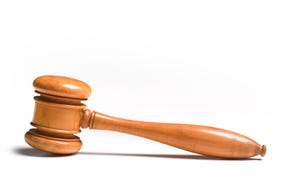Bluetooth and Medical Devices: Vital Signs Are Robust
April 10, 2002
Originally Published MPMN April 2002
INDUSTRY NEWS
Bluetooth and Medical Devices: Vital Signs Are Robust
|
The connectBlue serial port adapter with Bluetooth 1.1 wireless technology was used to demonstrate the transmission of electronic data from patient monitors at a recent conference. |
Bluetooth wireless technology has experienced delays and sundry growing pains, but Code Blue Communications Inc. (Woodinville, WA; www.codebluecommunications.com) believes it showed the technology's potential for the device industry at the recent Bluetooth Developers Conference. During the December event in San Francisco, the firm demonstrated the wireless transmission of electronic data from patient monitors and a patient-worn device using a Bluetooth 1.1–approved interface.
Code Blue Communications' connectBlue serial port adapter, which incorporates Bluetooth 1.1 wireless technology, enabled the Welch Allyn Propaq CS portable monitor to transmit waveforms for a full set of patient parameters, including multiple ECG channels and respiration. Code Blue also demonstrated the wireless transmission of oxygen saturation, and pulsed and continuous waveform data from a wearable sensor developed by Nonin Medical to a stand-alone monitor. Both device OEMs are currently investigating the feasibility of integrating Bluetooth technology into their products.
"We are exploring the combination of our oximeter solution with Bluetooth technology to dramatically improve patient mobility and to simplify the monitoring of oxygen saturation," says Nonin Medical president and CEO Gary Tschautscher. "Bluetooth technology is a perfect fit and extension to our small, low-power pulse oximetry technology."
The serial port adapter technology has Bluetooth 1.1 and FCC approvals, notes Code Blue Communications president Bill Saltzstein. These approvals "pass through to device manufacturers, allowing them to focus their resources in other areas while incorporating this industry-standard wireless technology into their products," he adds. The devices demonstrated at the conference using Bluetooth wireless technology have not been approved by FDA.
While early hype regarding Bluetooth's performance and subsequent delivery delays bred skepticism in some quarters, stable products and components are now shipping, notes Saltzstein. Interoperability issues with pre-1.1 Bluetooth specifications caused problems for early devices from different manufacturers.
Saltzstein recognizes that these issues led to some negative press coverage and delays in program plans. But the 1.1 spec is solid, he adds, and products shipping with 1.1 approval "interoperate nicely. One minute, I use my iPAQ with an Anycom Bluetooth CF card to connect via GPRS using an Ericsson phone to a Web site," says Saltzstein, "and the next I connect to a prototype medical device with a connectBlue serial port adapter. Different manufacturers, several different profiles, and vastly different applications . . . and they all work easily together."
The product demonstrations at the developers conference, stresses Saltzstein, "demonstrate the capabilities of Bluetooth in the medical market and validate the concept of a patient area network."
Copyright ©2002 Medical Product Manufacturing News
You May Also Like

.png?width=300&auto=webp&quality=80&disable=upscale)

